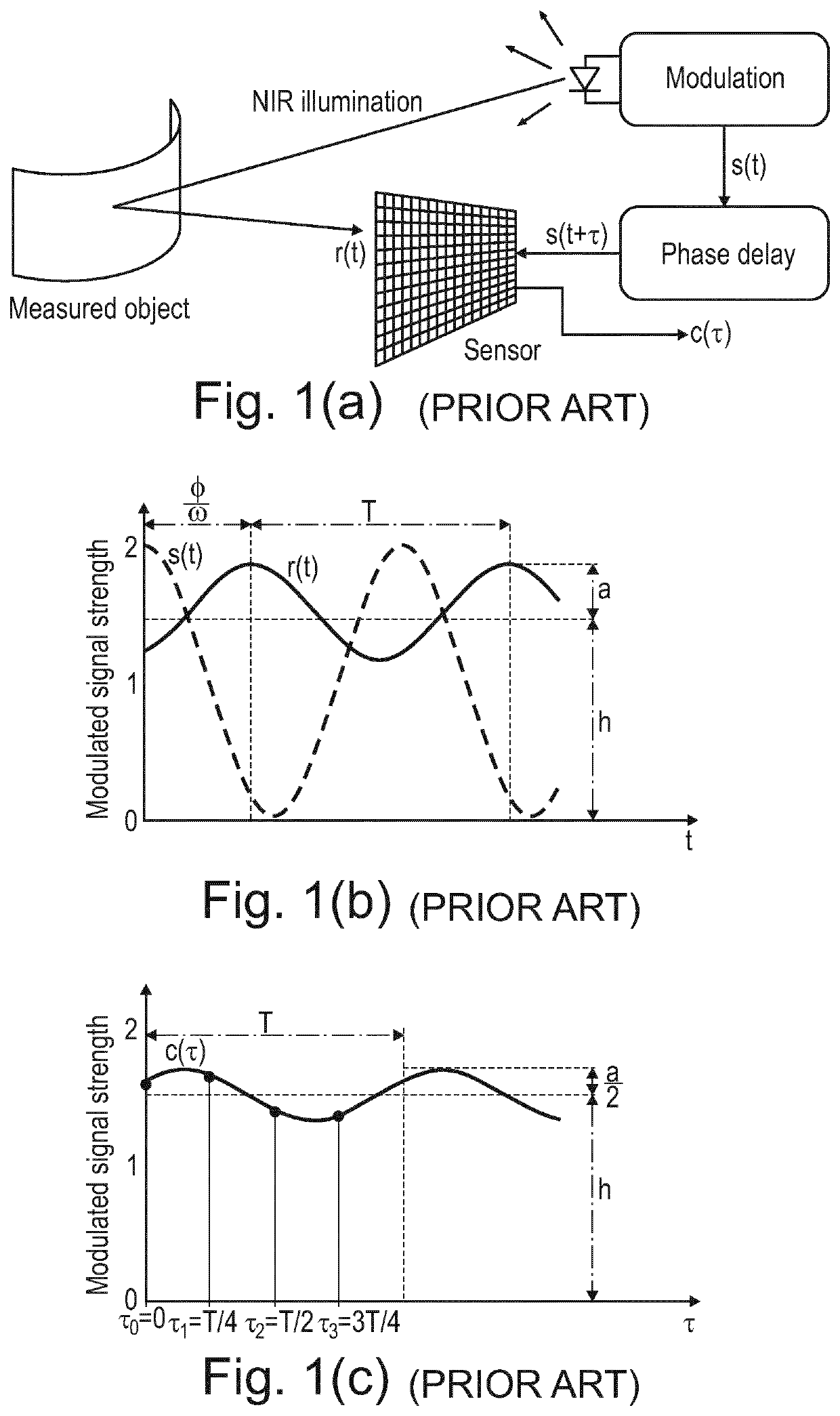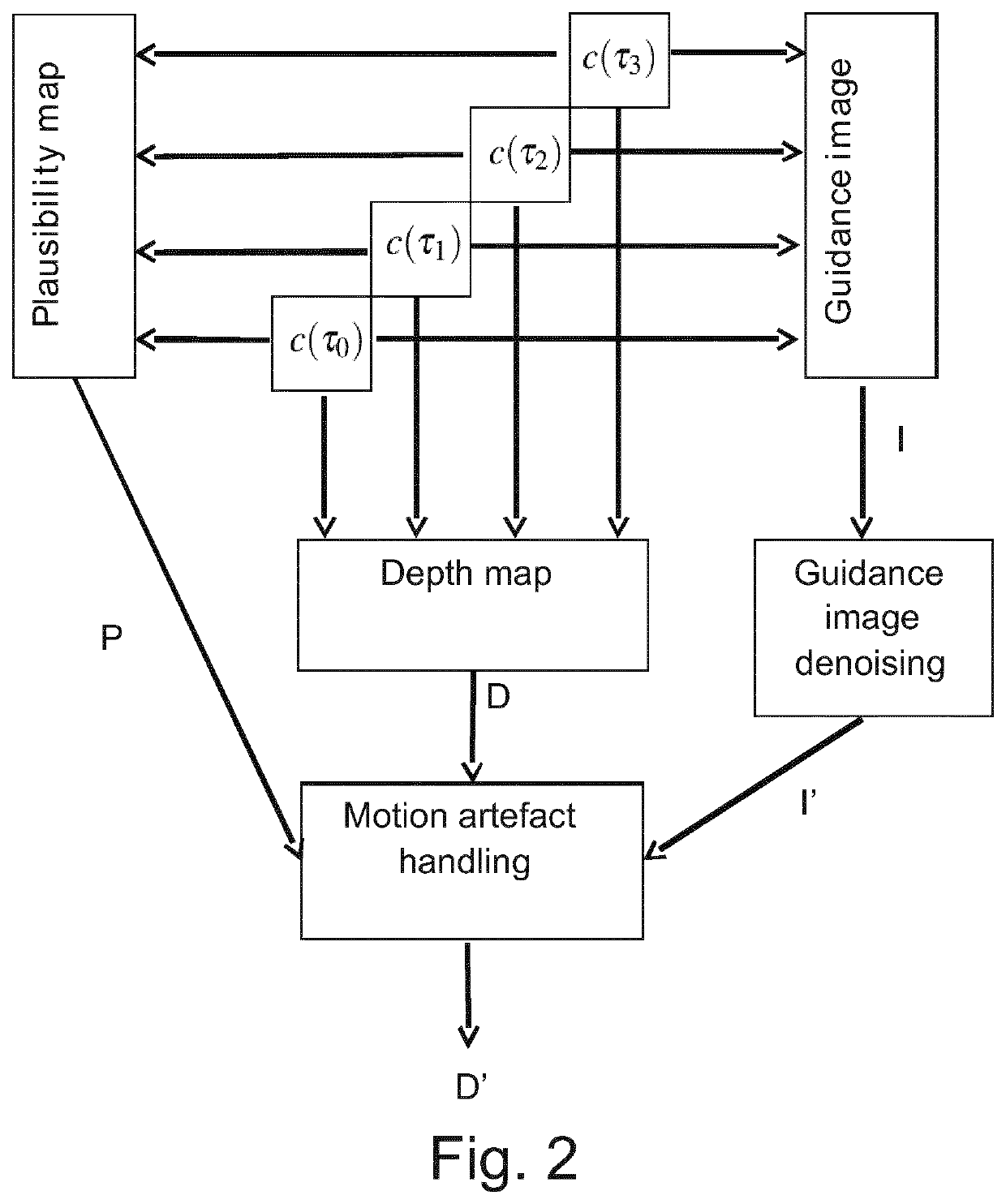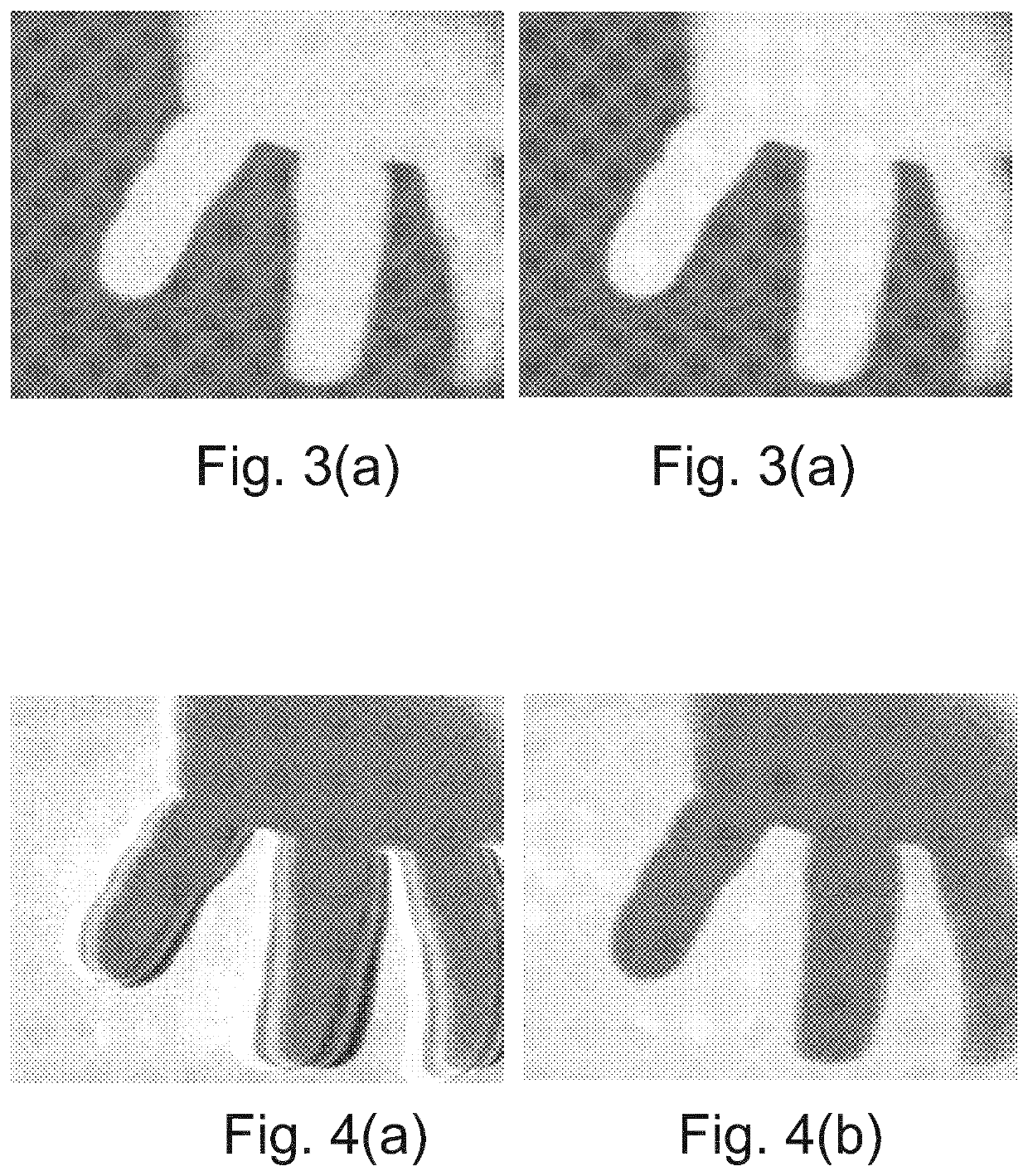Method and system for real-time motion artifact handling and noise removal for ToF sensor images
a technology of timeofflight and sensor images, applied in image enhancement, image analysis, instruments, etc., can solve the problems of unreliable depth measurement along object boundaries in dynamic scenes, image corruption, and limited linear motion approach, so as to avoid the risk of spatial artifact propagation, reduce noise, and increase integration time
- Summary
- Abstract
- Description
- Claims
- Application Information
AI Technical Summary
Benefits of technology
Problems solved by technology
Method used
Image
Examples
Embodiment Construction
[0085]As used herein, the “images” or “image signals” may be analog or digital, and may be subject to conventional analog or digital filtering.
[0086]Where references are made herein to steps, operations or manipulations involving “images”, etc., these are implemented, where appropriate, by means of operations upon electronically processable representations (e.g. captured stills of video frame signals, bitstream video data, MPEG files or video streams, PC-video, or any other capturable or viewable image data format) of such “images”.
[0087]Where references are made herein to steps, operations or manipulations involving “images”, “image signals” or “image data”, these may be implemented, where appropriate, by means of software controlled processor operations, hardware circuitry or any suitable combination of these.
[0088]While the present invention is suitably embodied in a computer system, it may be incorporated in an adaptor, an image processor, or any other equipment located between ...
PUM
 Login to View More
Login to View More Abstract
Description
Claims
Application Information
 Login to View More
Login to View More - R&D
- Intellectual Property
- Life Sciences
- Materials
- Tech Scout
- Unparalleled Data Quality
- Higher Quality Content
- 60% Fewer Hallucinations
Browse by: Latest US Patents, China's latest patents, Technical Efficacy Thesaurus, Application Domain, Technology Topic, Popular Technical Reports.
© 2025 PatSnap. All rights reserved.Legal|Privacy policy|Modern Slavery Act Transparency Statement|Sitemap|About US| Contact US: help@patsnap.com



